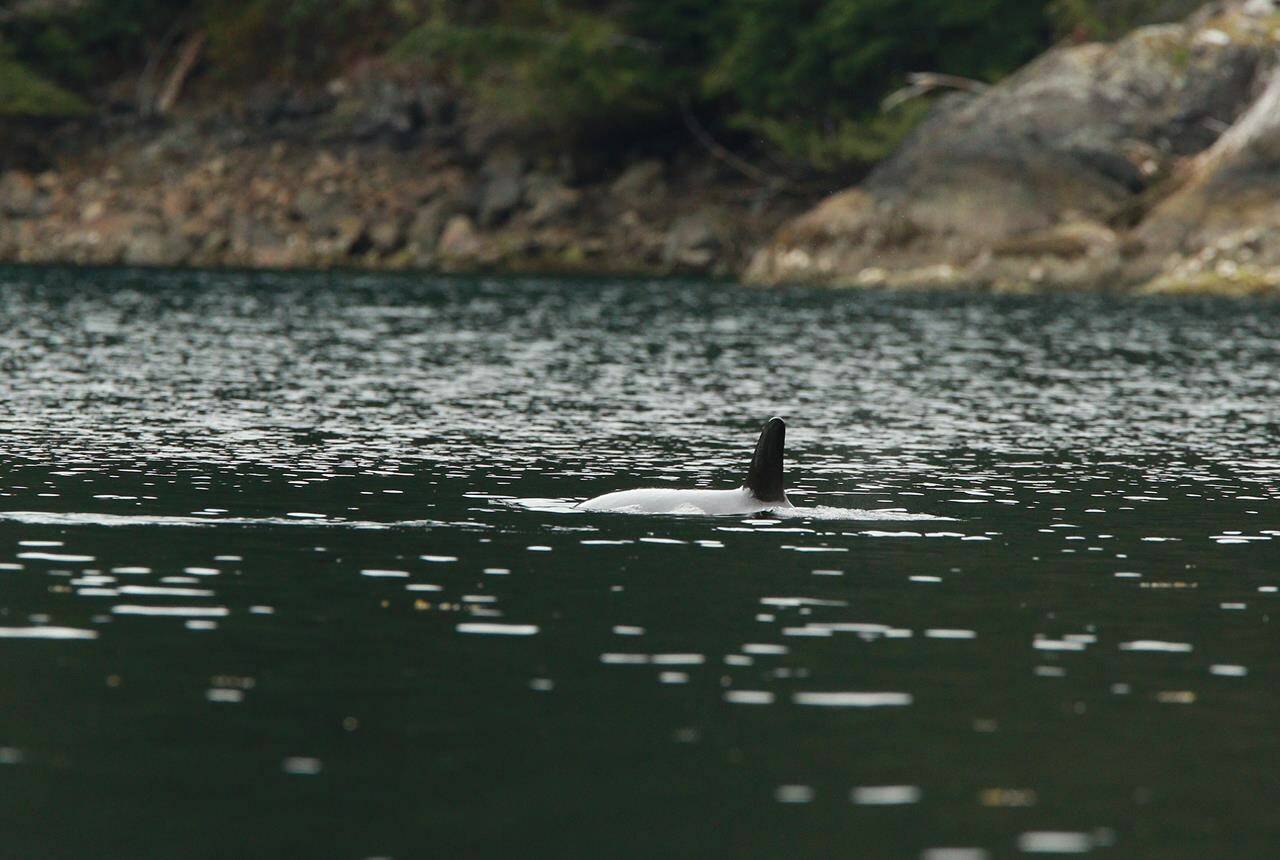A stranded killer whale calf is showing signs of regular activity as it breaches every seven to 10 minutes in a lagoon near the northern Vancouver Island village of Zeballos.
The two year-old orca has been alone in the lagoon near Little Espinosa Inlet since March 23 when its mother became trapped by the low tide and died on the rocky beach.
The orca calf is rising out of the water from a mid-section of the lagoon but it is staying clear of the narrow exit area that leads to the open ocean, which is also where its mother died.
Efforts by members of the area’s Ehattesaht First Nation, Fisheries Department marine mammal scientists and others to coax the orca calf through the narrow channel area, using boats, directional lines and whale calls, have not been successful so far.
The Ehattesaht has given the young calf a name: kwiisahi?is, meaning Brave Little Hunter.
The daily low tide at the lagoon reveals the difficult channel area where the orca calf must pass through, but also shows a healthy shoreline that is home to starfish, oysters, mussels and clams.
Cedar boughs placed by the First Nations residents hang from the bridge where the young orca must pass and a bouquet of flowers rests at the roadside where people are watching the situation unfold.
The Fisheries Department says it has identified two of the calf’s family pods after a whale researcher examined photographs from a whale watching group who spotted the transient killer whales in Barkley Sound, B.C., on Sunday.
The latest advancements in identifying killer whales with the help of artificial intelligence are being put to use to help reunite an orphaned B.C. orca with its pod, but first it needs to leave the lagoon.
The B.C.-based whale research group Bay Cetology is offering access to its online AI-assisted photo database to local photographers and tour operators as part of efforts to track the whale’s relatives, giving the calf a chance to connect with its pod.
Executive director Jared Towers said the technology scans photos of killer whales submitted by those on the water and can quickly identify individual animals based on their dorsal fins and other markings.
He said scientists have been able to identify specific animals based on their fins for more than 50 years, and using AI is the next advancement.
“Really, this is just an extension of that research methodology. It started with film, and then it went digital, and now we’re transitioning into deep learning, machine learning, or an artificial intelligence kind of model to conduct this work moving forward.”
Towers said the AI program, known as Finwave, is currently in its beta-testing stage, but has a more than 90 per cent accuracy rate when looking for Bigg’s killer whales such as the orphaned calf.
The platform, which started in 2021, has about 200 users in its testing phase and the goal is to turn it into an open-source data system by this summer.
He said photos taken Sunday morning and submitted to the platform show the calf’s relatives in Barkley Sound off Ucluelet, and heading north. Ucluelet is about 150 kilometres south, down the coast of Vancouver Island, from Zeballos.
Towers said that it’s possible the animal will make it out of the lagoon into the open ocean on its own, at which point it will be up to the whale to call out to find its pod.
If that doesn’t happen, Towers said rescuers could decide to lift the animal out of the lagoon and place it in the open ocean, which makes knowing where its pod is more important.
“I think that what would probably end up happening is that little whale gets put into a net pen, and then is released when its family is in the area,” he said.
“So, that’s why it’s very important for us to know more about where that family is, and which way they’re going, and when they’re there, and try and get an indication of their routine.”
Rescuers have tried a range of methods to get the calf to move beyond the sandbar, including recorded whale calls, specialized directional guide lines, the pounding of Indigenous drum beats, and metal pipes in the water struck to create a “sound wall,” but the young animal won’t leave the inlet where its mother was stranded.
Rescuers had to pause their efforts over the weekend while they wait for the tide to rise.
READ ALSO: Rising tides bring hope for stranded orca calf Brave Little Hunter

